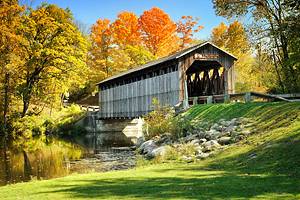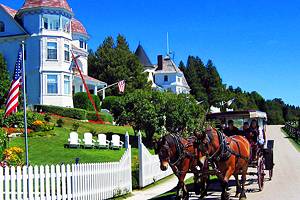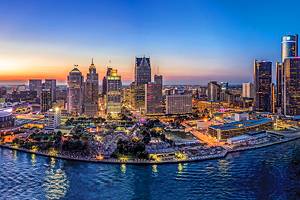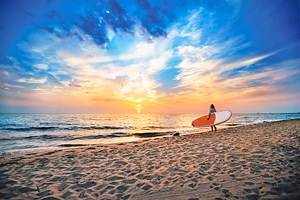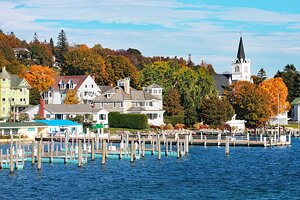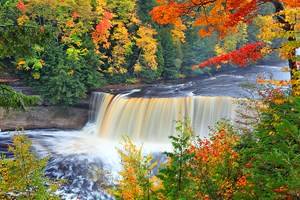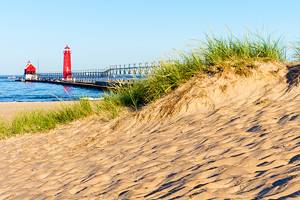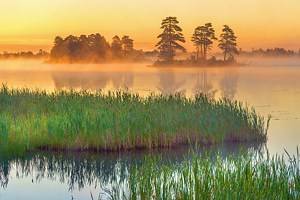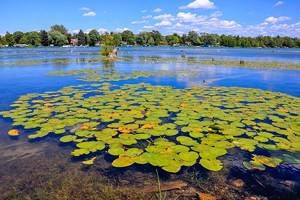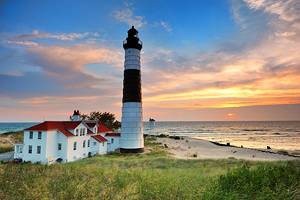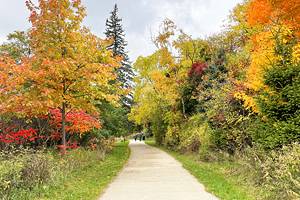Salmon Fishing on Lake Michigan: Things You Need to Know
Author Anietra Hamper is an avid angler who has spent time landing great catches on Lake Michigan.
Salmon fishing in Lake Michigan is one of the most thrilling angling opportunities in North America. The lake is bordered by Michigan, Indiana, Illinois, and Wisconsin, and anglers come from all over to seek out the Chinook salmon (kings), coho salmon (silvers), and the occasional pink salmon and Atlantic salmon that come to Lake Michigan waters.
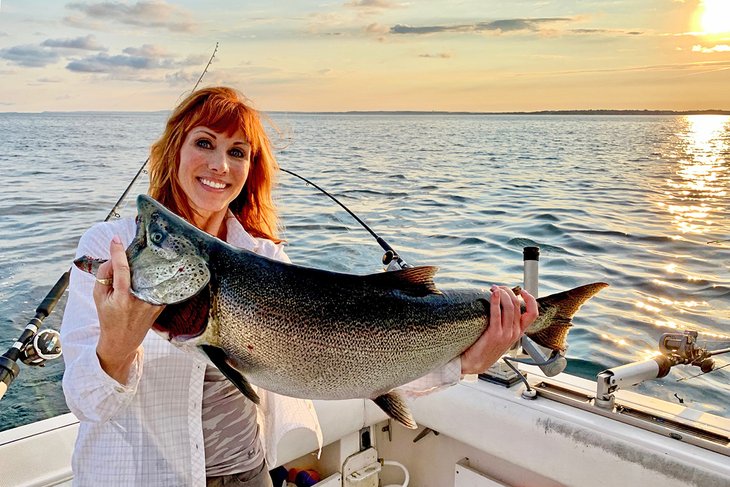
While Chinook and coho salmon are the most frequently pursued species, anglers also target other salmonid species in Lake Michigan, including steelhead (migratory rainbow trout), brown trout, and the native lake trout.
Salmon are not native to Lake Michigan, but they can naturally reproduce in the rivers due to the surrounding states' robust fish population management programs. These programs help maintain fish population levels that make Lake Michigan a world-class salmon fishery.
The state of Illinois raises and stocks about 750,000 advanced fingerling salmon and trout annually in harbors and at boat launches across the state's 63 miles of shoreline through the Illinois Department of Natural Resources.
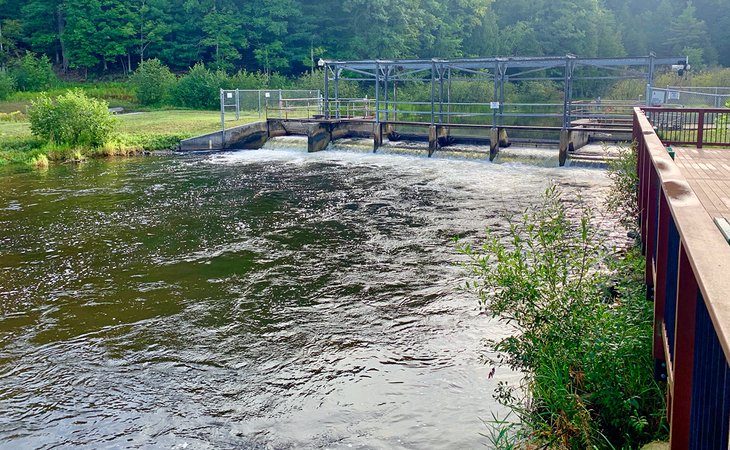
The state of Michigan has the Little Manistee River Weir egg-take facility, which operates out of Manistee. The egg-take and salmon harvest facility divert steelhead in the spring and Chinook salmon in the fall to collect eggs as the fish make their way from Lake Michigan to spawn in the cool, clear river water. The collected eggs are sent to state fish hatcheries, where they grow into fingerlings and are eventually released into Michigan's lakes, rivers, and streams.
These types of efforts in the states that surround Lake Michigan underscore its importance as a sought-after recreational salmon fishing lake, and the willingness of anglers to travel to catch the fish of a lifetime.
The king salmon (Chinook) is a bucket-list species for many anglers, and Manistee, Michigan is one of the best places to target them in the early fall, starting in late July and August. This is when the salmon migrate from upper Lake Michigan into rivers to reproduce. The Little Manistee River is closest to where we are based and where salmon will be staging.
Fishing Lake Michigan from Manistee Michigan
I set out to find out more about why anglers are fascinated with the king of all salmon by planning a several-day trip out of Manistee, Michigan. Over the course of three days, my fellow anglers and I planned to fish with a hired charter one day and our own boat the additional days for the best of both experiences as we learn about the salmon migration patterns and habits in Lake Michigan.
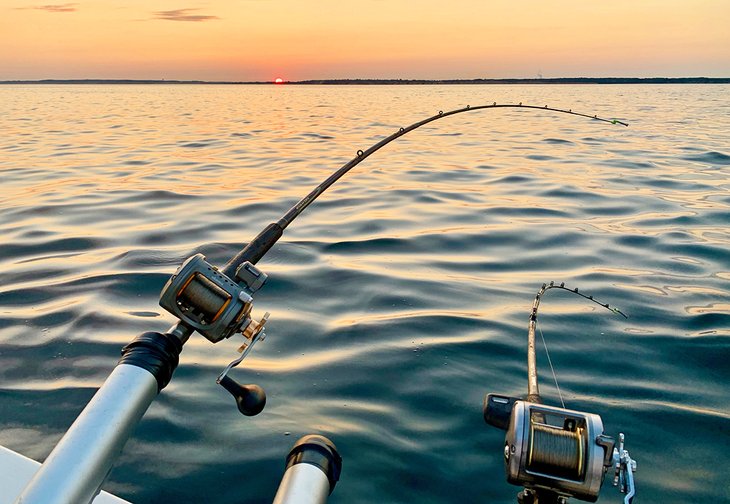
The wake-up alarm goes off at 4:15am the first day to catch our charter with Captain Paul Schlafley of Riverside Sportfishing Charters. Paul has guided for salmon on Lake Michigan for almost 40 years, and he can precisely spot below-surface current and temperature changes that are critical to know in order to adapt to the finicky nature of salmon.
During the fall months, salmon are on the move, and due to their sensitivity to even the slightest changes in water temperature and barometric pressure, their feeding patterns can and do shift frequently.
One of the main factors that our captain watches on his equipment as we set out before dawn is the water's thermocline. This is where warmer surface water transitions to cooler deeper water where the salmon tend to gravitate. The temperature difference in the water column can differ by several degrees every five feet and by as much as 10 degrees below the thermocline.
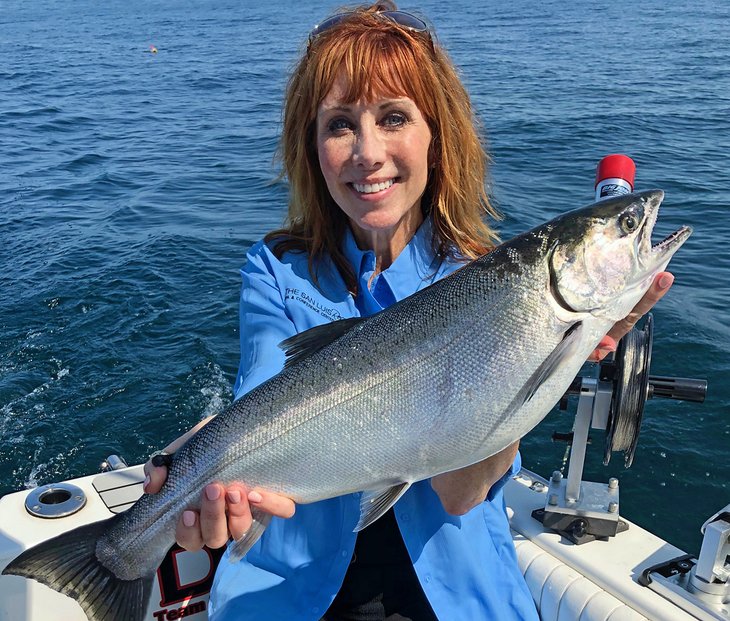
Chinook and coho Salmon prefer cold water, around 45 to 50 degrees Fahrenheit, and steelhead (rainbow trout) typically exist in the 45- to 60-degree water. All the species will move into the upper, warmer water column when feeding and prior to running up the rivers, so paying attention to temperature is critical.
We are trolling in 100 feet of water and based on the thermocline where there is a significant temperature difference, we set the lines to depths ranging 30 to 40 feet. But, when one element shifts, so, too, must the depth and presentation of the lures. These shifts can change by the hour and by the day, which keeps anglers on their toes.
We are fishing by moonlight, and the pre-dawn bite is what we want, as it is generally one of the best times of day to target salmon. Our tackle is a combination of colorful flashers to attract the fish and several J Plugs and spoons that glow in the dark to stand out in the dark water. A full moon, calm water, and the stillness before sunrise are elements that work in our favor almost immediately.
"Fish!" Captain Schlafley yells while lunging for one of multiple intricately placed rods off the sides and back of the boat, each set to hit a different depth.
The hit takes as we are still getting lines into the water, so everyone is on high alert ready to grab and go. The captain hands me the rod while the line zips off the reel at an exciting pace.
"Let him go, let him go," Schlafley instructs me. "Let him go and tire him out."
I fight the instinct to reel, worried that I was losing too much line too fast, but part of each new angling experience is to learn from the pros and respect the technique that each species requires.

When I finally have a chance to reel, I begin to rhythmically bend back while pulling the line and bend forward to reel. I can feel the forceful pull of a respectable king salmon as I try to steer it away from the other lines. The fish runs hard, unspooling the line and zigging and zagging behind the boat. Suddenly, the line goes slack. Just as quickly as the salmon hits my rod, he is gone.
There is little time to regret losing our first fish of the day because it was remedied almost immediately by the ripping sound of drag coming from another line; then another - and another. At once, three fish are on, and the chaos to bring them in begins again. One, two, three, stunning king salmon fighting on the lines.
The three anglers on the boat pace their reeling, as Captain Schlafley scrambles to bring in the other lines to keep them from getting tangled by the wayward fish. He grabs the net to get the fish in as each one comes to the boat. Each of us pulls in king salmon in the 25- to 30-pound range, one after another.
Excitement and high-fives fill the boat, but there is no time to waste celebrating because the morning bite is on, and it could turn off at any moment.

Now, this is fishing. I watch in awe as our captain constantly changes out presentation options once we realize that J Plugs seem to be the choice of the day for the salmon. He changes up some of the lines accordingly, trading a spoon for a J plug on a line at one depth and a different color paddle on another rod running at a different depth.
As the sun comes up, the bite decreases but remains steady as we pull in more kings and several impressively large coho salmon. When the bite slows down, even more, we continue to experiment with depth and presentation to see what else might work.
After several hours, the bite stops completely, and with nine salmon (six kings and three coho), we head back to the harbor. On the way into the harbor, the fish finder lights up with color, indicating that masses of salmon are on the move and making their way into the river.
With confidence on our side, we set out the next day to tackle salmon fishing on our own, but various water and environmental elements have changed, so what worked yesterday may not, and probably won't, work today.
We try several spots, logging over 50 miles without so much as a fish. Then a fast-moving storm blows in earlier than expected, forcing us to pack up early and head in. As we talk to charter captains wrapping up their morning trips, we discover that they didn't catch much either.

On day three, we head out again, this time returning to the location where the fish were biting on day one. We have bright sunshine and calm waters. Captain Eric Hensley evaluates the various decisions about where to go, the depth to fish, and what tackle to employ.
We pick a spot based on information obtained from morning charter trips, and while setting up our rods, we get a hit almost immediately. I grab the reel and the salmon is on the run.
"Let it run, let it run," Hensley says.
The familiar refrain is training me how to handle this species and resist the instinct to set the hook, which is necessary for other types of fish when they first hit the line.
While the fight is impressive, it appears from the feel of the pull that this fish is smaller in size from what I caught previously. While smaller than king salmon, the coho on my line is impressively large, which set the tone for the day once I got it into the boat. While Hensley is an expert at perch and walleye fishing on Lake Erie, he is still learning about how to target salmon on Lake Michigan.
"A great way to learn about how to approach salmon fishing, especially if you are doing it on your own, is to go to a local tackle shop for insight and monitor local fishing reports," says Hensley. "Buying the right tackle for the job is also essential, as is learning the local terminology that anglers are using. You can do that by researching chat forums before you go."
There is a large learning curve for fishing on your own on Lake Michigan. Even the most experienced anglers on this lake second guess their decisions about tackle, depth, and location. It is especially challenging for captains who are learning the ropes for Lake Michigan salmon, with the multitude of decisions that need to be made throughout the day.
Captain Hensley employs a strategy using a mix of lures, colors, presentation, and depth with each line from the boat to see what will attract the salmon.
"You have to evaluate what's most effective," says Hensley. "The idea is to throw many things out and see what's hitting, then gravitate to that. One day spoons work, and some days, its plugs. You have to be ready to change the program accordingly."
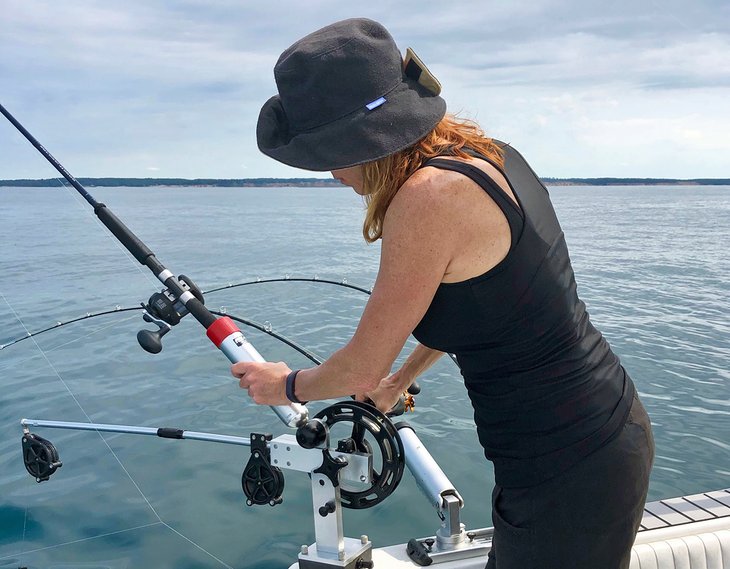
We continue to try a combination of meat rigs, J Plugs, spoons, and trolling flies in different colors and depths. Our in-line planner board rods are rigged with varying lengths of lead core line with fluorocarbon leaders. Some anglers choose to use copper or weighted steel as an alternative or in addition to lead core lines, depending upon the depth desired.
Diver rods are typically spooled with braid or wire line and are usually deployed in tandem (high and low) off each side of the boat. Flashers and dodgers are common attractants used with diver rods to entice actively feeding fish into the spread of lures. Downrigger poles utilizing monofilament lines are set closest to the boat and therefore usually the deepest.
Although salmon are caught throughout the lake in the summer months, staging fish can be found along the "shelf" off Manistee in August and early September. This is a great place to start for unfamiliar anglers, and a line of boats can usually be found trolling this area where the bottom steeply drops off starting around 80 feet down.
After a full day on the boat, we have several hits and losses, but we end up with three sizable coho salmon and victory high fives to celebrate our success.
While the fall months are prime for king salmon on Lake Michigan, the salmon experience can vary depending on where you fish, the time of year, what you are fishing for, and the angling methods used. Each state offers something unique given its location of coastlines, giving anglers a variety of salmon fishing to experience during the year.
Before you plan your memorable salmon angling trip, here are 6 things to know:
6 Things to Know about Salmon Fishing on Lake Michigan
Types of Salmon to Catch

Chinook Salmon (Kings)
Chinook salmon, referred to as king salmon, are considered Lake Michigan royalty and what anglers will drive for miles to catch. During the summer, these fish show up in large numbers, testing the resolve and endurance of anglers for rod-bending action weighing up to 30 pounds or more.
The Chinook salmon generally enter the deep waters of Lake Michigan from May to early June. The most popular time for anglers to go for the kings of the lake is during the annual salmon run, which is usually between late July through September. This is when Chinook make their way toward the rivers where they were naturally born or released as fingerlings.
During this time, the fish are plentiful, aggressive, and large in size. The annual run continues into October and tapers off in November. Trolling in the lake's deep waters is a popular way of chasing Chinook, but if you want to test your angling skills, you can fish for them from shore on light tackle.
The southern portion of Lake Michigan near Illinois has a mix of salmon and trout populations that are great to target offshore during the summer fishing season for anglers who want more variety. In addition to Chinook Salmon, the other species available to target and harvest from Illinois are coho salmon, lake trout, rainbow trout (Skamania steelhead and Arlee strains), and brown trout.
Coho Salmon (Silvers)
While anglers go after Chinook salmon for size, coho salmon are popular for their sheer quantity in Lake Michigan. Though they are generally smaller than Chinook, they still provide anglers fantastic rod action. Coho salmon generally prefer shallower waters than their Chinook counterparts.
Coho salmon spawn during the spring and fall, making May through early June and September through November great months to go after them in large quantities. Trolling is a popular technique for coho, but since they are smaller than Chinook, many anglers enjoy trying their hand at catching them on light tackle, which adds to the angling excitement.
Coho is the most popular species for anglers fishing in the Illinois portions of Lake Michigan, according to the Illinois Department of Natural Resources. The Coho are plentiful, and they benefit from a healthy stocking program in the state.
Pink Salmon/Atlantic Salmon
Although not as common to catch as the Chinook and coho salmon, pink salmon and Atlantic salmon occasionally make an appearance in the Lake Michigan waters near the Illinois coastline and in Michigan streams in the Upper Peninsula.
Where to Go
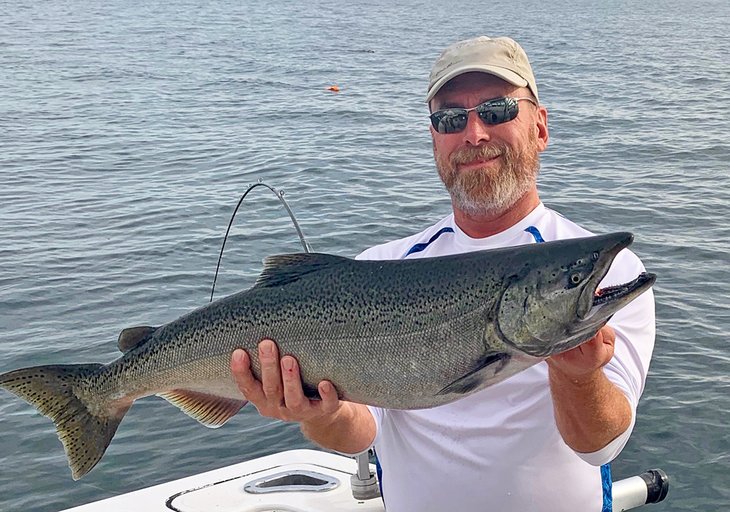
Lake Michigan has many departure points that are great for salmon fishing, and with four states that surround it, you can choose your base from the direction you are coming from, or by what you want to target and the best times of year for them.
Michigan
Michigan has more than 3,000 miles of Great Lakes shoreline, so deciding where to go on Lake Michigan can be a tough decision for anglers. You can narrow the options by deciding on the species that you want to target and the time of year when they are most productive.
Southern Lake Michigan is best in the spring for coho salmon and sometimes for Chinook salmon, since these waters warm first and typically have more bait. Good ports in the spring for coho salmon and sometimes Chinook are New Buffalo, St. Joseph, South Haven, Saugatuck, Holland, and Grand Haven.
In the summer months (June and the first part of July), salmon are scattered throughout the lake, and fishing is slower, except from the ports of Fairport and Manistique, which are typically good in early summer.
Salmon anglers should head to the central and northern parts of Michigan in August, when salmon travel to rivers where they were hatched naturally or are stocked. Whitehall, Pentwater, Ludington, Manistee, and Frankfort are good options during these times.
In the fall, the best spots for returning coho salmon are Frankfort and Platte Bay, Grand Haven, and St. Joseph. All these ports have fall returns of Chinook and coho. The salmon are known to occasionally stage at the ports, and other times they will run right up the rivers quickly.
One of the things that makes salmon fishing outstanding in Lake Michigan from the Michigan ports is that the rivers produce wild Chinook salmon. Michigan has been active at river protection and habitat rehabilitation that includes dam removals allowing salmon to migrate upriver and find habitat suitable for spawning.
Indiana
The Indiana shoreline along Lake Michigan has a number of great ports to launch from. Hammond, East Chicago, Portage/Burns Harbor, and Michigan City all have boat launches available and facilities for anglers to use. In addition to stocking Chinook and coho salmon and brown trout, the state's flagship stocking program is for Skamania summer run steelhead. Indiana is the sole source of Skamania eggs in the Lake Michigan basin and stocks a large number of them.
Illinois
If you are planning shore fishing in Lake Michigan from Illinois, you will want to base yourself near one of the harbors operated by the Chicago Park District in places like Belmont, Navy Pier, Montrose, Calumet, Burnham, and DuSable. You can find a full listing of accessible harbors and boat launches from the Illinois IFish website.
If you plan to do salmon fishing by charter, you will want to stay near North Point Marina, Waukegan Harbor or the Chicago harbors of Montrose, Belmont, Diversey, Burnham, Calumet, and 31st Street, which all have active charter sportfishing fleets available.
Wisconsin
During the spring months, starting in April, coho salmon migrate to the north making for great fishing in Racine and Kenosha counties and sometimes all the way up into Door County. There are many access ports from Kenosha to Door County, with boat ramps located in each Wisconsin shoreline county.
While Lake Michigan is abundant with salmon throughout, anglers should also consider the outlying tributaries and creeks, which also have salmon-filled fishing opportunities. Some of Lake Michigan's tributaries that are great for salmon fishing are the Kewaunee River in Kewaunee, Fischer Creek in Manitowoc, Milwaukee River and Sheboygan River in Wisconsin, and Port of Manistee and St. Joseph River in Michigan.
When to Go

Michigan
Spring and early fall are the most productive times to fish for coho and Chinook salmon in Michigan waters. In the spring, head towards southern Lake Michigan, where the waters warm first, and bait is plentiful.
The fall salmon run usually starts in August, when the coho and Chinook salmon travel to the rivers where they were hatched naturally or stocked. The early summer months of June and early July are slower but not impossible to catch salmon that are more scattered in the lake off the Michigan shoreline.
Indiana
Indiana has the best early-spring fishery of any state, and anglers can catch salmon almost as soon as the ice goes out, both from shore and boats. Indiana is unique in that the U-shape of the coastline allows anglers to find shelter from many more wind directions than other states that have a north/south coastline.
March through May is the best time to fish for salmon from Indiana, when the majority of salmon are in the southern half of the lake due to environmental factors such as shallower, warmer water. Coho salmon show up in March, and the action generally stays steady into May. Chinook salmon typically show up in late April and can be caught in good numbers through May.
Indiana is the only state that stocks large numbers of summer-run Skamania steelhead, so June through August is a good time to catch them, when they are returning to Indiana streams.
Illinois
Salmon can be caught most times of the year offshore from Illinois. They can be targeted from the shoreline during the spring, fall, or summer upwellings, when the water is cold. Most anglers who fish from Illinois target coho salmon, as they are abundant during late April through June.
Chinook salmon and rainbow trout are typically caught offshore during July and August. In the fall, adult Chinook, coho, and steelhead return to the harbors where they were stocked, creating great fishing from the piers and break walls, especially near Waukegan, Diversey, and Jackson harbors.
Wisconsin
Great coho salmon fishing from the Wisconsin shoreline into Lake Michigan starts in April as the fish migrate to the north. They run from Racine and Kenosha counties all the way up into Door County. Summer fishing for Chinook, coho, steelhead, lake trout, and brown trout get going when the lake stratifies, and anglers can target 50-degree water.
Ways to Catch Salmon
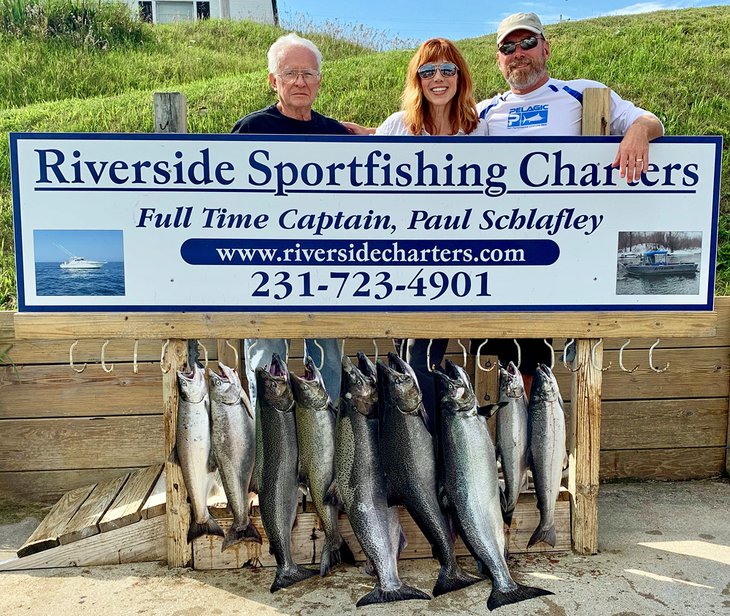
Hire a Charter
If you are new to salmon fishing or unfamiliar with salmon fishing in Lake Michigan, it is wise to hire a charter. Salmon are finicky creatures and respond to ever-changing elements in the water, from temperature and current to biological factors that give them the natural urge to move in and out of the lake and river systems at different times of the year.
An experienced charter captain can give you the best chance to get on fish. Most of the harbors along the Lake Michigan shoreline will have charter fleets available. If you plan to fish during the spring or fall salmon runs, it is best to book a charter early, even a year ahead.
Don't forget to book your lodging ahead of time, too. Hardcore salmon anglers book far in advance for their annual fishing trips and often lock in with the same charters and lodging, so prime locations can be hard to find at the last minute.
While most charters will provide the tackle and bait that you will need for the day, you will need to take a few items including your valid fishing license, snacks, and water. Other things to take for a day on the charter include a windbreaker, lightweight shirt, fishing gloves, and rubber-soled shoes for the boat.
Morning charters typically head out before sunrise, and it can be cool, so planning to dress in layers that you can take off as the day progresses is essential. Also be sure to pack a hat, polarized sunglasses, and sunscreen in your day pack.
Take Your Own Boat
Many anglers who own boats want to try salmon fishing on their own in Lake Michigan. While this is possible, it is important to do your homework, as salmon fishing requires different tackle and techniques than other types of species.
You can research online and get advice from anglers or the Department of Natural Resources in the state from which you will be departing to devise a game plan. It is also important to research weather patterns and tackle options that work best for the time of year you plan to go.
A good tip for boaters learning how to salmon fish in Lake Michigan is to book a charter for your first day then put the new tips and techniques that you learn into practice on your own for the remaining days.
This accomplishes two things: you learn something new each time you go out to help set you up for success on your own, and you will likely walk away with fish for the freezer, even if you get skunked on the days following the charter. That said, you can also get skunked on charter days too, but your chances of catching with an experienced guide on Lake Michigan are going to be higher than on your own.
Fish from Shore
All the Lake Michigan shorelines along the four states that border the water have ample shore fishing opportunities. You can find the best recommendations on the Department of Natural Resources websites for each state and get advice on the most productive shore spots from local tackle shops. The mouths of rivers are great places to fish from shore during the salmon runs. Most of the boat harbors have piers that provide ample shore fishing locations.
Fishing Techniques & How to Fish for Salmon

Regardless of whether you hire a charter, fish from your own boat, or give it a go from the shore—there are specific techniques that are preferred when it comes to successful salmon fishing.
Trolling
Trolling is the most popular way to fish for Lake Michigan salmon because you can set up a variety of lure options in various colors, depths, and presentations at the same time. In the summer months, salmon favor the cooler, deeper waters of the lake. Trolling gives you the best opportunity to cover the most ground at once and easily adjust to different depths throughout the day.
Coho salmon cruise in shallower waters than Chinook, which often require downriggers to get lines into the deeper water. Another tool to use while trolling is planer boards, which allow you to cover a wider range of water from the back of the boat.
Speed is another factor and one that we employed while fishing on our own in Manistee, Michigan. Captain Hensley uses a range of speed as an essential element to attract salmon.
"Speed is critical and, more importantly, speed at your average lure depth. This can be significantly different than a speed at the surface, with currents and wind pushing and pulling the boat. Slightly slower speeds at 2.0 to 2.2 miles per hour in the spring, when fish are more lethargic, and around 2.5 to 2.7 miles per hour in the summer is fairly typical," says Hensley.
As for attractors, the sky is the limit on what you can use, and the preference of salmon will change from day to day. It is best to try a combination of bright-colored or shiny spoons, J Plugs, paddles, and other salmon-attracting lures to start. There are even lures now that incorporate battery-operated lighting functions below water as attractors for salmon.
Once you see what gear is working best, then you can adjust throughout the day.
Fishing from Shore
Fishing from a boat gives you the advantage of mobility and the ability to target various depths with multiple lines, but many anglers are successful in fishing for salmon from the shoreline. There are times of the year when salmon hold in the calmer waters of the harbors, which means fishing from the shoreline or from a pier with a casting rod or spinning rod can be quite productive.
During the spring, coho salmon hang around the piers and harbors in Michigan, and during the fall salmon run, you can catch large coho and Chinook in these areas as they head for the rivers.
Be sure to have a variety of tackle available for shore fishing, including heavier spoons in a variety of colors. Blue and silver spoons are favored.
Catching salmon in the harbor and river is more of a reaction bite, rather than a feeding bite, so the idea is to get your lure in front of them, so they react to it. Heavier spoons are good options to cast from shore, and crankbaits are also popular options.
Licenses and Regulations

Lake Michigan is surrounded by four states, so it is important to know and understand the salmon fishing regulations that apply to your trip in the state you will be fishing from.
First, you need to obtain a valid fishing license to cover the duration of your trip. Many states offer one-day and multiple-day licenses for both residents and non-residents.
Make sure you apply for the correct license.
Next, make sure to review the regulations for salmon catch and keep limits, as they vary from state to state, and they can change from year to year. You can find information on licenses and regulations from each state's Department of Natural Resources fisheries division.


